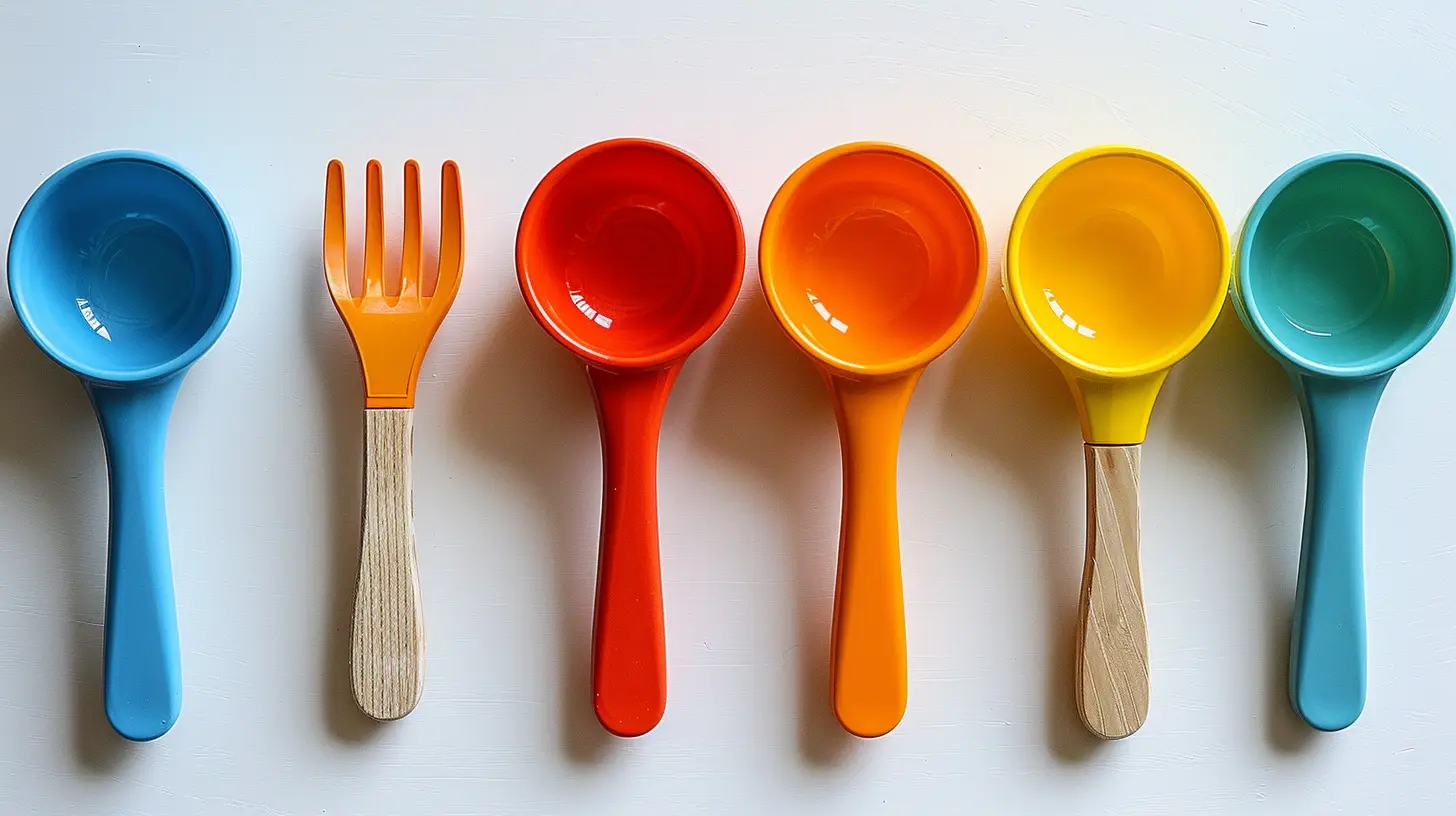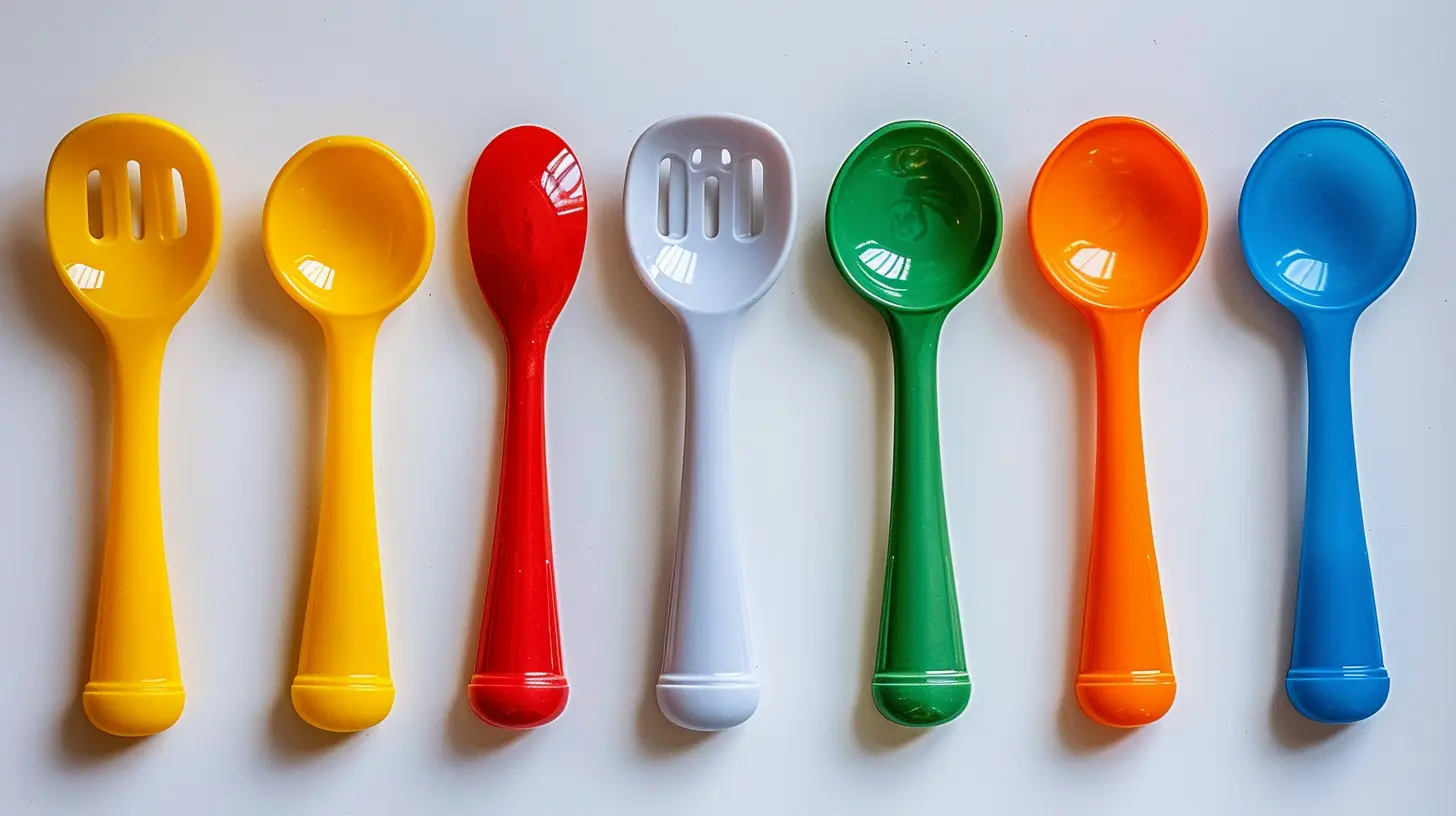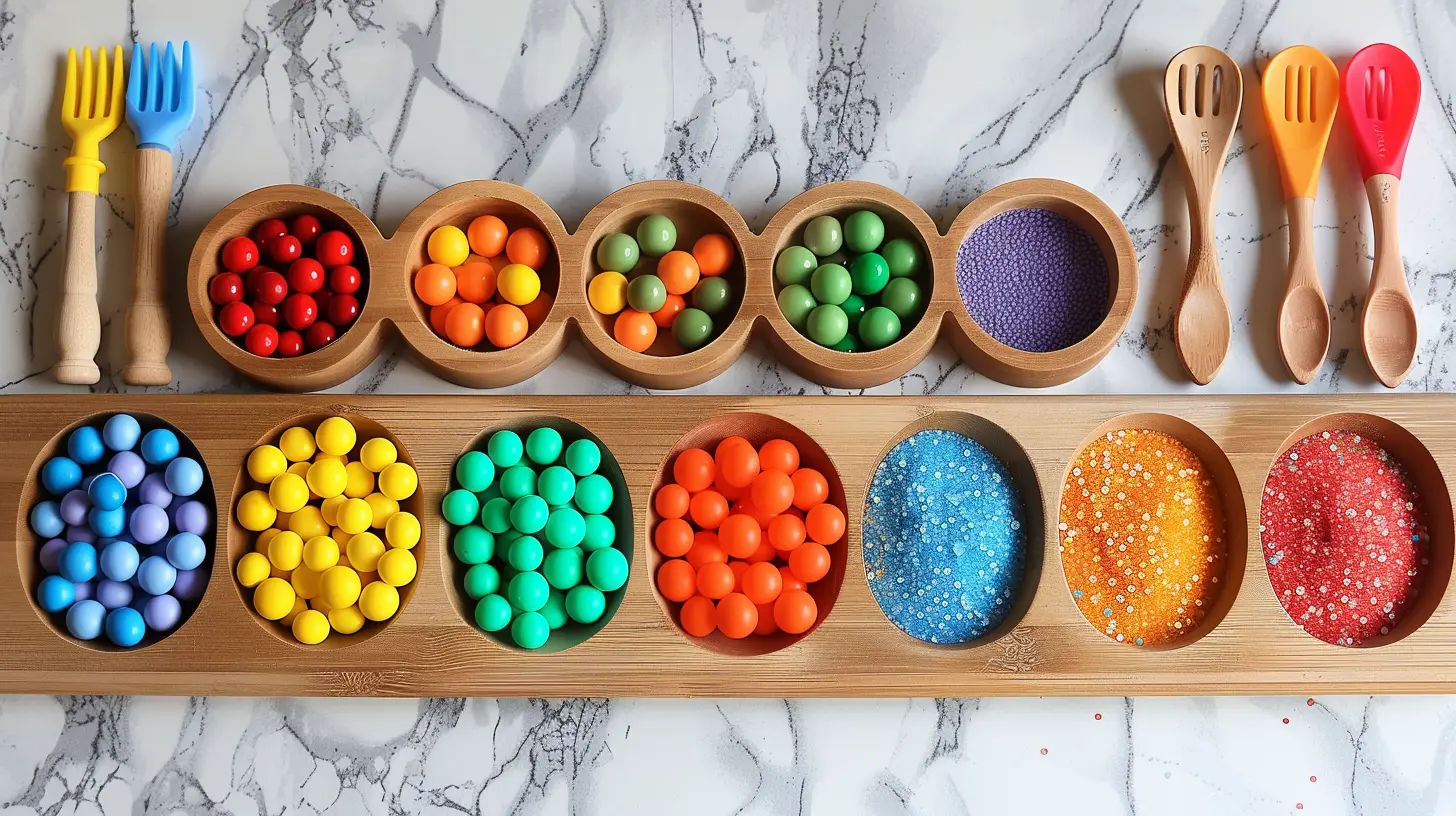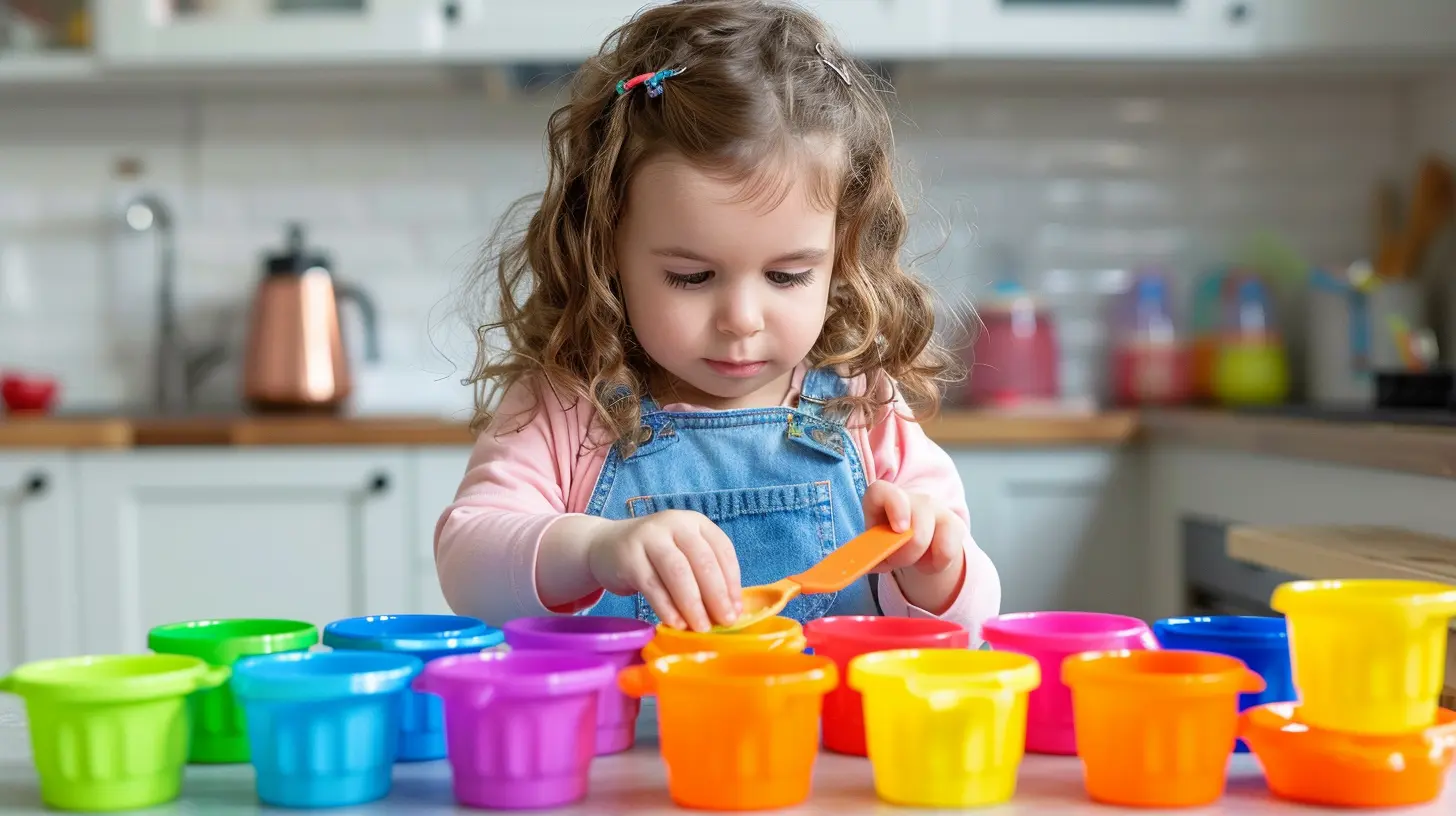The Transition to Using Utensils: Fine Motor Milestones
17 August 2025
As parents, we cheer for all the little wins — first steps, a first word, and yes, even the first time our toddler manages to get a spoonful of applesauce into their mouth without redecorating the walls. The transition to using utensils is more than just a cute photo op; it's a big step in your child’s fine motor development. So if you're watching your little one poke at peas with a fork like it's a tiny pitchfork war, don't worry — you're not alone.
In this article, we're diving into the how, the why, and the "when do I stop freaking out?" parts of teaching your child to use utensils. Grab your coffee (hey, you’ve earned it!) and let’s walk through this milestone together.
Why Using Utensils Is a Big Deal
At first glance, using a fork or spoon might look like just another mealtime task. But for young kids, it’s actually a major developmental leap. It combines hand-eye coordination, focus, patience (yes, even if it's in short supply), and fine motor skills.Think about it: holding a fork, scooping up food, navigating it to the mouth — all without flipping the plate? That’s a mini miracle!
The Link Between Utensils and Fine Motor Development
Fine motor skills are those tiny muscle movements in the hands, fingers, and wrists. When your child starts using utensils, they’re learning how to:- Control hand and finger movements
- Develop bilateral coordination (using both hands together)
- Improve visual-motor integration (their eyes and hands working in sync)
So yeah, this isn’t just about spaghetti. It’s a critical piece of the development puzzle.
When Do Kids Typically Start Using Utensils?
Let’s get one thing straight — there is no “perfect” age. Every child is on their own timeline. But here’s a general idea:- 6-9 months: Babies usually start showing interest in self-feeding. They might grab a spoon or mimic adults.
- 10-12 months: You might see your little one experimenting with dipping a spoon into food (and maybe flinging it everywhere).
- 13-18 months: That’s when real progress often kicks in. Kids begin scooping with a spoon and attempting to stab food with a fork.
- 2-3 years: By now, most kids have improved utensil control and can manage a full meal with minimal mess (well, sort of).
Does that mean if your 2-year-old still prefers fingers over forks, something's wrong? Not at all. Growth isn’t a race.
Signs Your Child Is Ready to Use Utensils
Okay, so how do you know it’s time to pull out the baby fork and spoon set?Here are some telltale signs:
- They're grabbing at your utensils during meals
- They're able to sit up independently and have good head control
- They’re showing interest in self-feeding
- They can pick up small items like puffs or peas (that pincer grasp’s coming along!)
If your kid is doing a few of these things, it might be time to start introducing utensils into the mix.
How to Introduce Utensils Without the Stress
Alright, let’s make this fun. Because let’s face it — adding stress to mealtime is not the vibe we’re going for.1. Start With the Right Tools
Not all utensils are made equal, especially for tiny hands. Look for:- Chunky handles that are easy to grip
- Rounded tips for safety
- Curved or angled spoons to help guide food to the mouth
Silicone or soft plastic utensils can be a gentle introduction.
2. Let Them Play With Their Food (Yes, Really)
You read that right. Sensory exploration is a major part of fine motor development. Let your kid squish, scoop, and smear. It’s messy but meaningful. Think of it like finger painting with yogurt — messy art with a purpose.3. Model the Behavior
Kids are natural mimics. If they see you using a fork and spoon, they're more likely to want in on the action. Turn it into a game — “Can you eat your carrots like Mommy does?”4. Be Patient (Like, Really Patient)
There will be spills. There will be flying mac and cheese. It's all part of the process. Avoid jumping in too quickly to “fix” things. Let them figure it out. They’re learning through trial and error, and that’s gold.Creative Ways to Build Fine Motor Skills Daily
Utensil skills don’t just come from the high chair. They’re influenced by a range of activities that happen throughout the day. Here are a few fun (and sneaky!) ways to boost those fine motor muscles:Play-Dough Fun
Squishing, rolling, and cutting play-dough helps strengthen hand muscles — the same ones used to grip a spoon.Sticker Time
Peeling and placing stickers helps refine that all-important pincer grasp.Threading Beads
Threading big beads onto a string works wonders for hand-eye coordination.Water Play
Let them use cups, ladles, or plastic spoons in the bath or at the water table. It’s utensil practice in disguise!Troubleshooting: What If My Child Hates Utensils?
Ah yes, the dreaded refusal. Some toddlers are strong-willed (read: adorable tyrants) and just say no to forks. What do you do?Keep Offering Without Pressure
Just because they say no today doesn’t mean they won’t say yes tomorrow. Keep putting utensils on the tray. Keep modeling. Keep it low-pressure.Try A Different Tool
Maybe a spoon isn’t doing the trick. Try a spork or even toddler chopsticks with training loops. Sometimes changing things up reinvigorates interest.Focus on Finger Foods
Hey, fingers were the original utensils! Foods like banana slices, cheese cubes, or soft veggies are great for practicing pinching and control.Celebrating Progress (Even the Tiny Wins)
It’s easy to fixate on the mess and the missed bites, but don’t forget to celebrate the small victories. Maybe today they got more peas in their mouth than on the floor. That’s progress!Take pictures, cheer them on, clap like a maniac if you have to — because your enthusiasm fuels their confidence. And confidence? That's everything.
When to Worry
Let’s pause here: while most children develop utensil skills in their own sweet time, some milestones signal a need to check in with your pediatrician or an occupational therapist. Reach out if:- Your child shows no interest in self-feeding by 18 months
- They struggle with simple hand movements
- There’s extreme clumsiness or frustration during meals
- They’re not meeting other fine motor milestones
Remember, early support can make a big difference. There’s no shame in asking for help.
A Quick Timeline Recap
| Age Range | Utensil Skills You Might See ||----------------|---------------------------------------------------|
| 6-9 months | Interest in utensils, early attempts to self-feed |
| 10-12 months | Dipping, bringing spoon to mouth (with help) |
| 13-18 months | Scooping with more control, starting to stab |
| 2-3 years | Improved precision, consistently using utensils |
Every child is unique, so treat this as a guideline, not a measuring stick.
Final Thoughts: Trust The Process
Parenting is full of messy moments that are secretly magical. The transition to using utensils is one of them. It’s a beautiful mix of chaos and growth, and it hands your child one more tool for independence.So yes, the spaghetti might end up in their hair (and yours), but behind every dropped noodle is a step forward. Stay patient. Keep cheering. Let them lead the way.
You’ve got this — and so do they.
all images in this post were generated using AI tools
Category:
Toddler MilestonesAuthor:

Karen Hurst
Discussion
rate this article
2 comments
Sheena Scott
What a joyful journey this is! Watching little ones master utensils is such a delightful milestone. Each clumsy attempt is a step toward independence—celebrate every messy moment! Happy parenting!
December 2, 2025 at 4:38 AM

Karen Hurst
Thank you! It truly is a joyful process, and each messy moment is a valuable step in their independence. Celebrating these milestones makes parenting so rewarding!
Riff McAllister
The transition to using utensils is a critical fine motor milestone in early childhood development. Parents can facilitate this process by providing age-appropriate tools and encouraging practice during mealtimes. Patience and consistent support are essential, as each child develops at their own pace, fostering confidence and independence in their eating skills.
August 23, 2025 at 4:27 PM

Karen Hurst
Thank you for your insightful comment! You're absolutely right—supportive tools and patience are key in helping children master utensil use, promoting both their fine motor skills and independence.


